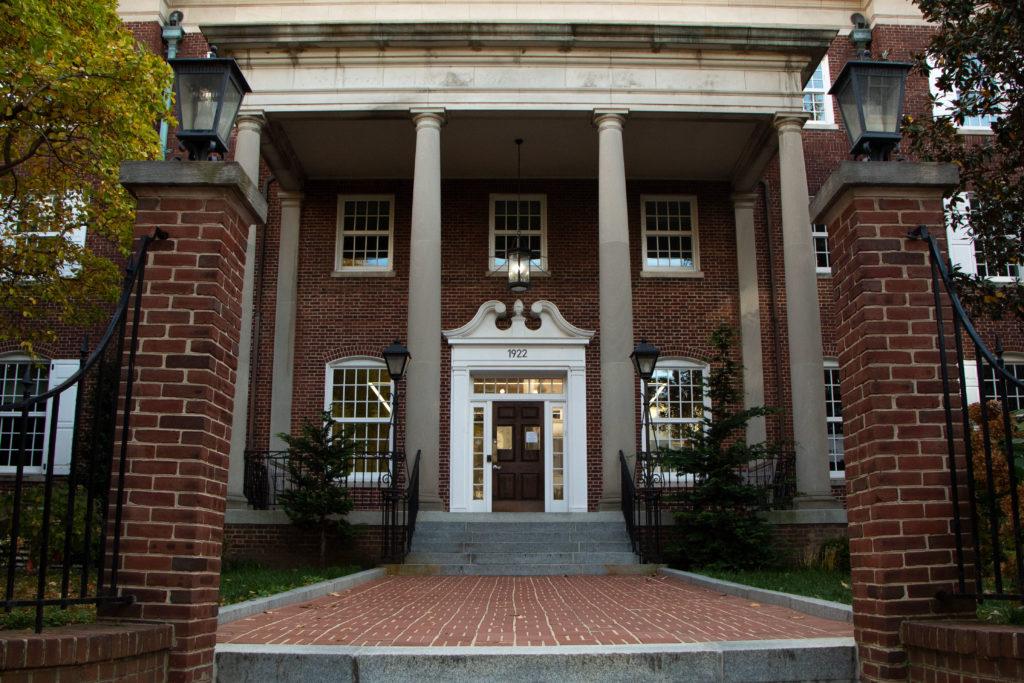The ground floor of the Marvin Center will be transformed into a student health and wellness hub as early as 2015, officials announced Wednesday.

The University Counseling Center and Student Health Service will empty out their K Street offices and move to the heart of campus over the next year, an unanticipated and costly relocation that comes after months of heavy student lobbying.
Dean of Student Affairs Peter Konwerski, who helped spearhead the planning, said GW will downsize its bookstore to make room for larger patient areas.
The bookstore’s upper space, which includes mostly book displays and cashier stations, will likely be converted into a waiting room. The main floor, lined with shelves of GW gear, class materials and Apple products, will become treatment rooms and offices.
The bookstore will continue to sell textbooks and class materials in its lower level with plans to sell GW-branded merchandise at another on-campus location. The University will also sell its gear at a smaller shop in the space that previously housed STA Travel.
A group of administrators and students had spent the last five months weighing potential options after University President Steven Knapp said last November that the relocation would be expedited.
Konwerski had previously said that while the Marvin Center was the most desired location, space would only open up after years of gradual reshuffling.
“As we started to brainstorm, we gravitated to the bookstore and if we could make that work.
When we selected the architect, we realized it could happen,” Konwerski said in a phone interview Wednesday.
The move also made sense given the economics of a campus bookstore, which is packed during the start of a semester but threatened by online textbook sales.
While the bookstore’s manager, Bob Blake, has declined to talk about its bottom line, he said last spring that nearly one-third of all textbook transactions were rentals – which bring in far less cash than permanent sales.
Student Association president Julia Susuni, the group’s top advocate on the issue, said the move was put on a fast track after Knapp’s commitment last November, which she said aligned with the University’s goal of ditching its pricey, off-campus leased spaces by 2020.

“Part of the reason is because it came from President Knapp directly. He really made a point of making sure it happened quickly,” Susuni said.
Knapp told the Hatchet last fall that moving the campus health centers was not a priority before hearing the pitch from the SA, but agreed that merging the offices would be important to increase access because “the synergy between them are powerful.”
University spokesman Kurtis Hiatt declined to comment on the costs for the design and the construction projects. The costs will come to light during the Board of Trustees budget discussions in May.
Architects from a firm called SmithGroup JJR, which also designed the GW Hospital and Duques Hall, has also begun planning the look of the new space.
The health center centralization also comes two years after the University created a “one-stop shop” for student services called Colonial Crossroads in the Marvin Center, centralizing career services, study abroad and student life offices.
Other areas under consideration included the basement space of the soon-to-open Science and Engineering Hall and the “superdorm” on H Street.
“I want to thank our working group for its efforts to identify a permanent space on campus for these vital university services,” said Knapp in a release. “Our Student Association leaders made a compelling case for co-locating health services and the counseling center to make them more accessible to students.”








